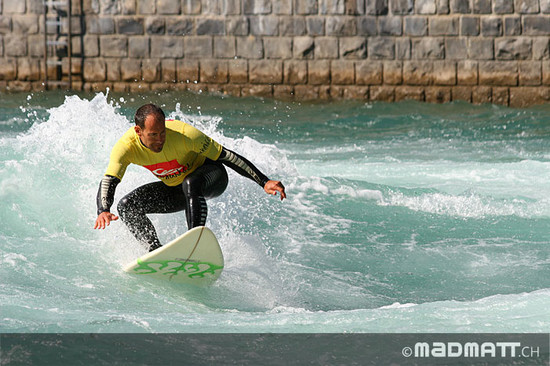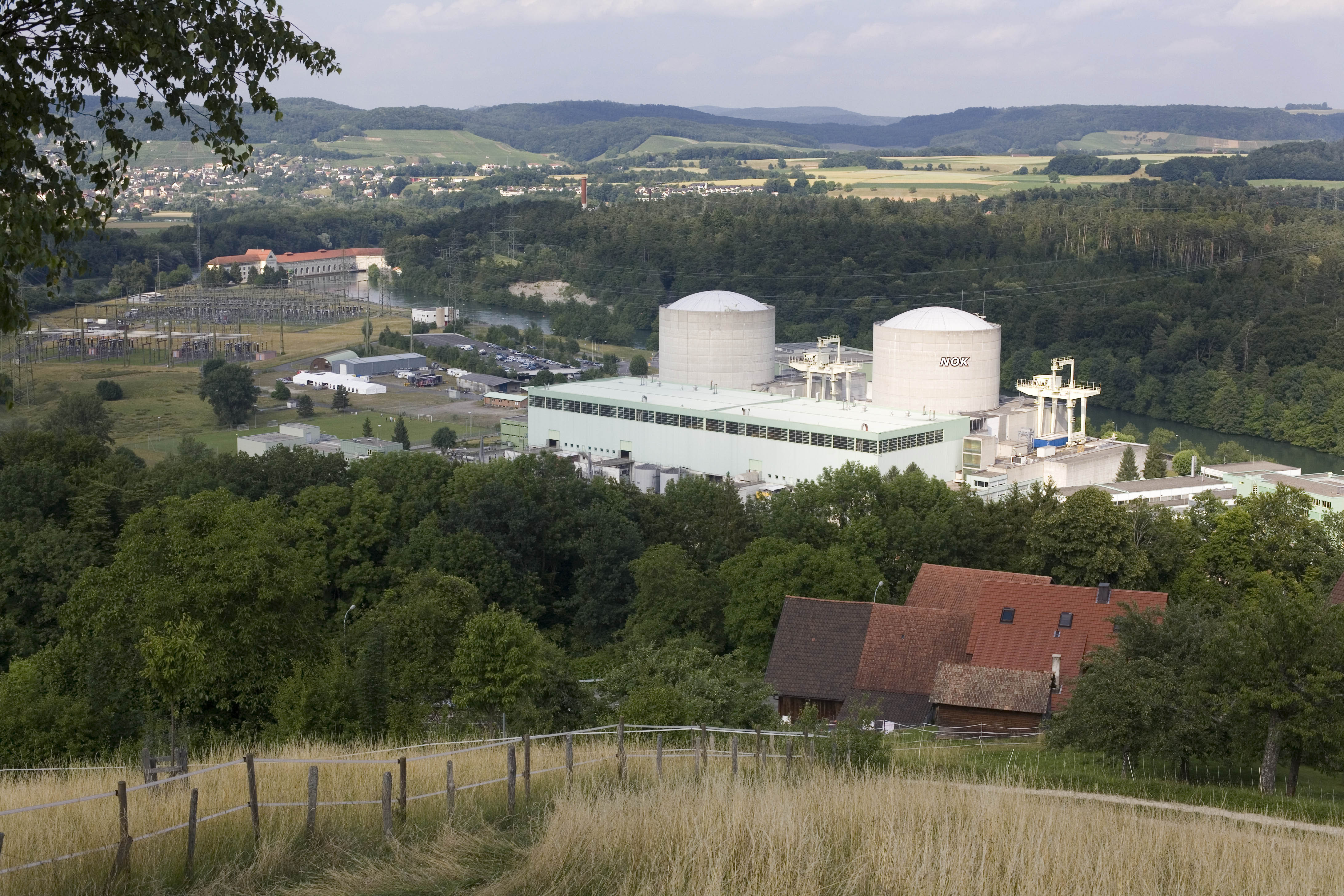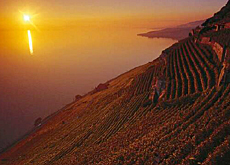Mountain communes receive hydro billions

Some communes in the Swiss Alps are sitting on a valuable raw material: water, for which they charge for permits. But the windfall can also be a curse.
Countless mountain communities give out licences – lasting normally 80 years – to energy firms wanting to set up hydroelectric power plants on their territory. For these they levy water taxes.
From 2030 many of these permits will expire and the energy firms will have to give up their right of use. This is what’s known as reversion: the return of an estate to the grantor or to the grantor’s heirs after the grant has expired.
Since small communities can hardly take the use into their own hands, they offer new permits and thus renounce the reversion. For this they are then compensated by the energy firms – how much is a matter of negotiation.
“These protracted administrative processes must in part be planned years in advance,” said Roger Pfammatter from the Swiss Water Management Association. “Fifteen years is normal.”
This is because when the permits expire, it’s the end not just of water taxes, which in many communes in cantons Graubünden and Valais make up more than half the local budget, but of a unique bonanza.
Communes and cantons
Jörg Aeberhard, head of hydro at Swiss energy company Alpiq, estimated that the one-off windfall was worth around SFr20 billion ($22.6 billion) to canton Valais.
No one seems to know how much we’re talking nationwide. One reason for this is that, according to the constitution, water is a cantonal matter. Second, the amount depends on the timing of the reversion and the early assessment of the energy market.
And third, the compensation received by communities for forgoing the reversion is not legally regulated, and is a matter of negotiation.
More than 90 of the roughly 140 communes in canton Valais are so-called “concession communities”, in other words they have received at some point money in the form of reversion compensation.
In Graubünden the figure is around SFr120 million. The national total is some SFr500 million. Most of this comes from mountain cantons: Graubünden makes up 22 per cent of Switzerland’s hydroelectric production, Valais 27 per cent, Ticino 11 per cent and canton Bern contributes eight per cent.
Squabbling
So how should these billions now be spent? Such sums arouse people’s desires and, according to the NZZ am Sonntag newspaper, the peace in Finhaut, a 367-inhabitant village in the Trient Valley in Lower Valais, is under threat.
The locals are squabbling over the SFr112 million that the commune is set to receive in 2017 after the reversion of the 100-year permit.
What’s more, the four other communes in the Trient Valley will also pick up a cheque totalling SFr230 million. It’s also unclear how this will be spent.
Often cantons have a word in the communes’ ears and ask for their share of the windfall – to balance the system of redistributing finances among the country’s 26 cantons.
These “reversion billions” have yet to factor in balancing the national finances, as the less well-off cantons, which benefit from the money, are fighting against efforts by richer cantons to muscle in and take a share.
Another party wanting to have a say is of course the licence holder, who ultimately has to pay the bill.
“From the initial cost of around five centimes (5.60 cents) per kilowatt hour for hydroelectricity, more than a half is today spent on water taxes,” Pfammatter said.
“Add to that the issue of reversion, and the energy companies have to pay millions to billions more.”
Creative solution
A significant step has been taken by the commune of Staldenried in Upper Valais. Work on a partner solution with an energy company began back in 1992 and 19 years later – in January 2011 – approval was granted by the canton.
“The four communes of Eisten, Staldenried, Stalden and Saas-Balen have founded a new partnership in which the existing permit holder is also involved,” mayor Alban Brigger told swissinfo.ch.
He added that the communes had brought in their water rights and their part of the investments, which they had received from reversion, and the permit holder had brought in their share, for which they had claim to a certain compensation.
The association calls itself Ackersand 1 Ltd. The communes are majority partner with 70 per cent.
“Correspondingly, the communes have a claim to 70 per cent of the energy produced,” Brigger said. The licence holder can then buy this with preferential terms.
“The communes could have offered a permit for another 80 years and then sold it to the highest bidder such as Axpo or Alpiq, but thanks to our limited company the communes have the guarantee of being able to decide on the energy themselves.”
And at the same time the windfall means Staldenried has been able to pay off its debts and lower the tax burden.
Switzerland, “Europe’s water reserve”, produces most of its electricity (35.83 billion kilowatt hours per year) by means of hydroelectric plants.
In the whole world, only Norway, Iceland and Austria have higher percentages.
In Switzerland there are about 1,600 hydroelectric plants and 190 dams (the highest, at 285 metres, is Grande Dixence in Valais).
Two-thirds of the hydroelectric energy come from the mountain cantons Uri, Graubünden, Ticino and Valais.
Exploitation of hydropower (by means of run-of-river plants, storage and pumping systems) generates a turnover of about SFr2 billion.
Using a variety of measures, the government intends to promote the renewal and upgrading of existing plants. The goal is to increase mean production by at least 5% by 2030.
(Source: Federal Energy Office)
In 2010 consumption of electricity in Switzerland increased by 4% over 2009 and amounted to 59.8 billion kilowatt hours (kWh), according to the Federal Energy Office.
The nation’s electric power plants produced 66.3 billion kWh (-0.4%).
Despite the new record set by the Mühleberg power plant (Bern), production of electricity by Switzerland’s nuclear plants fell by 3.5% to 25.2 billion kWh.
Complex electrical energy produced in Switzerland in 2009 comprised 56.5% from hydroelectric plants, 38.1% from nuclear plants and 5.4% from conventional thermal plants and other plants.
Overall, in 2010, 66.8 billion kWh were imported and 66.3 billion kWh were exported.
(Adapted from German by Thomas Stephens)

In compliance with the JTI standards
More: SWI swissinfo.ch certified by the Journalism Trust Initiative














You can find an overview of ongoing debates with our journalists here . Please join us!
If you want to start a conversation about a topic raised in this article or want to report factual errors, email us at english@swissinfo.ch.